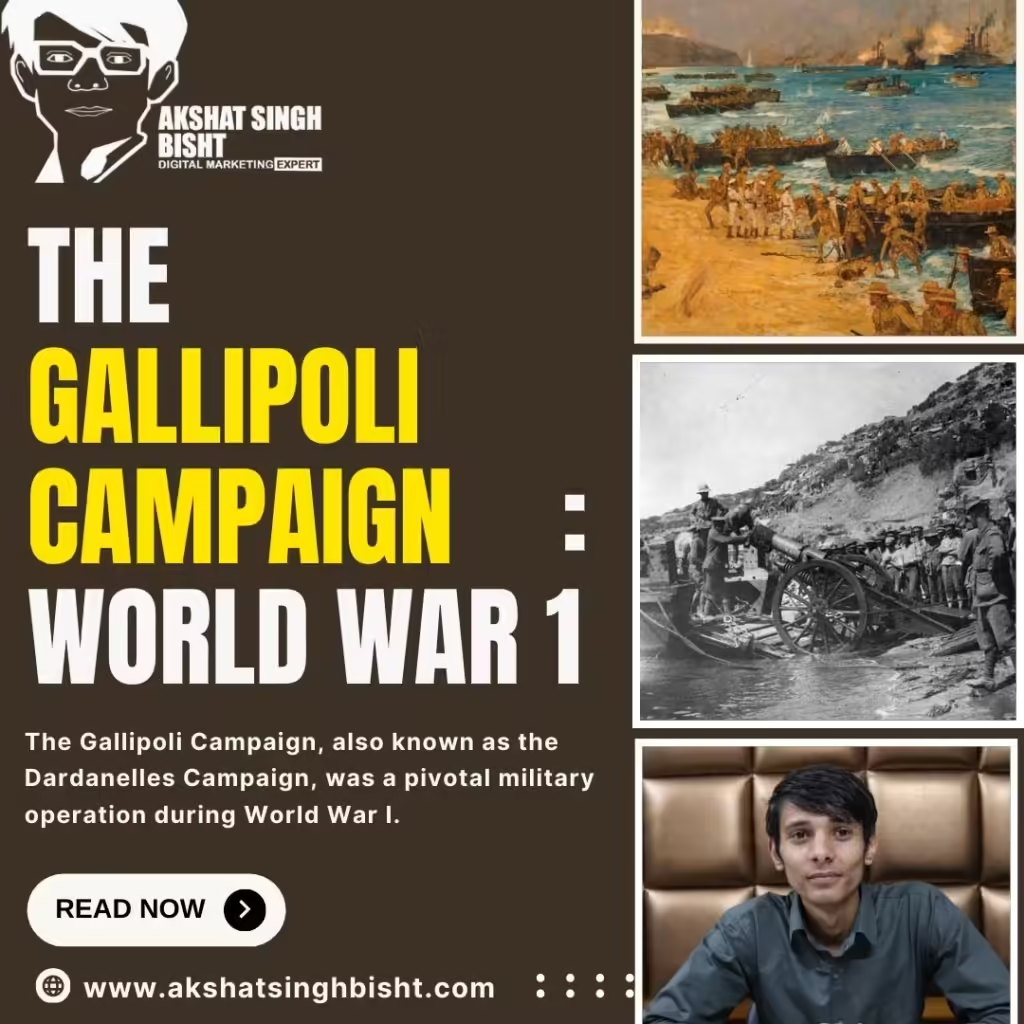The Gallipoli Campaign, also known as the Dardanelles Campaign, was a pivotal military operation during World War I. Conducted on the Gallipoli Peninsula in modern-day Turkey from April 25, 1915, to January 9, 1916, this campaign was a joint British and French effort aimed at capturing the Ottoman capital of Constantinople (now Istanbul) to secure a sea route to Russia. Despite the ambitious goals, the campaign ended in a disastrous defeat for the Allied forces, with significant long-term implications for all involved parties.

The origins of the Gallipoli Campaign lie in the strategic stalemate on the Western Front and the need to open new fronts to alleviate pressure on the Allied forces. The Allies aimed to:
The campaign’s inception was largely due to the efforts of Winston Churchill, the First Lord of the Admiralty. He believed a naval assault on the Dardanelles could quickly force the Ottoman Empire out of the war. However, the planning phase was marked by several critical flaws:
The leadership on both sides played a crucial role in the campaign’s outcome. General Sir Ian Hamilton led the Mediterranean Expeditionary Force, while General Otto Liman von Sanders, a German officer, commanded the Ottoman defenses.
The campaign began with a naval attack on the Dardanelles on February 19, 1915. The Allied fleet, comprising British and French battleships, aimed to clear the strait of mines and destroy coastal defenses. Key events included:
Following the naval setbacks, the Allies shifted to a combined land-sea operation. The land invasion commenced on April 25, 1915, with troops landing at multiple points on the Gallipoli Peninsula.
The campaign quickly devolved into trench warfare, similar to the Western Front, characterized by:
In August 1915, the Allies launched a major offensive aimed at breaking the stalemate. Key battles included:
The Gallipoli Campaign faced numerous challenges:
By late 1915, it was clear the campaign was untenable. The decision was made to evacuate the Allied forces, a process executed between December 1915 and January 1916. The evacuation was one of the few successful aspects of the campaign, carried out with minimal casualties.
The Gallipoli Campaign resulted in heavy losses on both sides. The Allies suffered approximately 250,000 casualties, including 46,000 dead. The Ottoman forces incurred similar numbers, with around 250,000 casualties, including 86,000 dead. The campaign had a profound impact on the national consciousness of the participating countries, particularly Australia and New Zealand, where ANZAC Day is commemorated annually.
The failure of the Gallipoli Campaign had significant strategic and political repercussions:
The Gallipoli Campaign left a lasting legacy, particularly in Australia and New Zealand. ANZAC Day, commemorated on April 25 each year, honors the soldiers who fought and died in the campaign. The Gallipoli Peninsula itself has become a significant site of remembrance, with numerous memorials and cemeteries dedicated to those who perished.
The Gallipoli Campaign stands as a poignant reminder of the complexities and tragedies of war. It exemplifies the importance of thorough planning, effective leadership, and the harsh realities faced by soldiers in battle. Despite its failure, the campaign left a lasting legacy and serves as a testament to the bravery and resilience of those who fought on both sides.
Akshat’s passion for marketing and dedication to helping others has been the driving force behind AkshatSinghBisht.com. Known for his insightful perspectives, practical advice, and unwavering commitment to his audience, Akshat is a trusted voice in the marketing community.
If you have any questions simply use the following contact details.